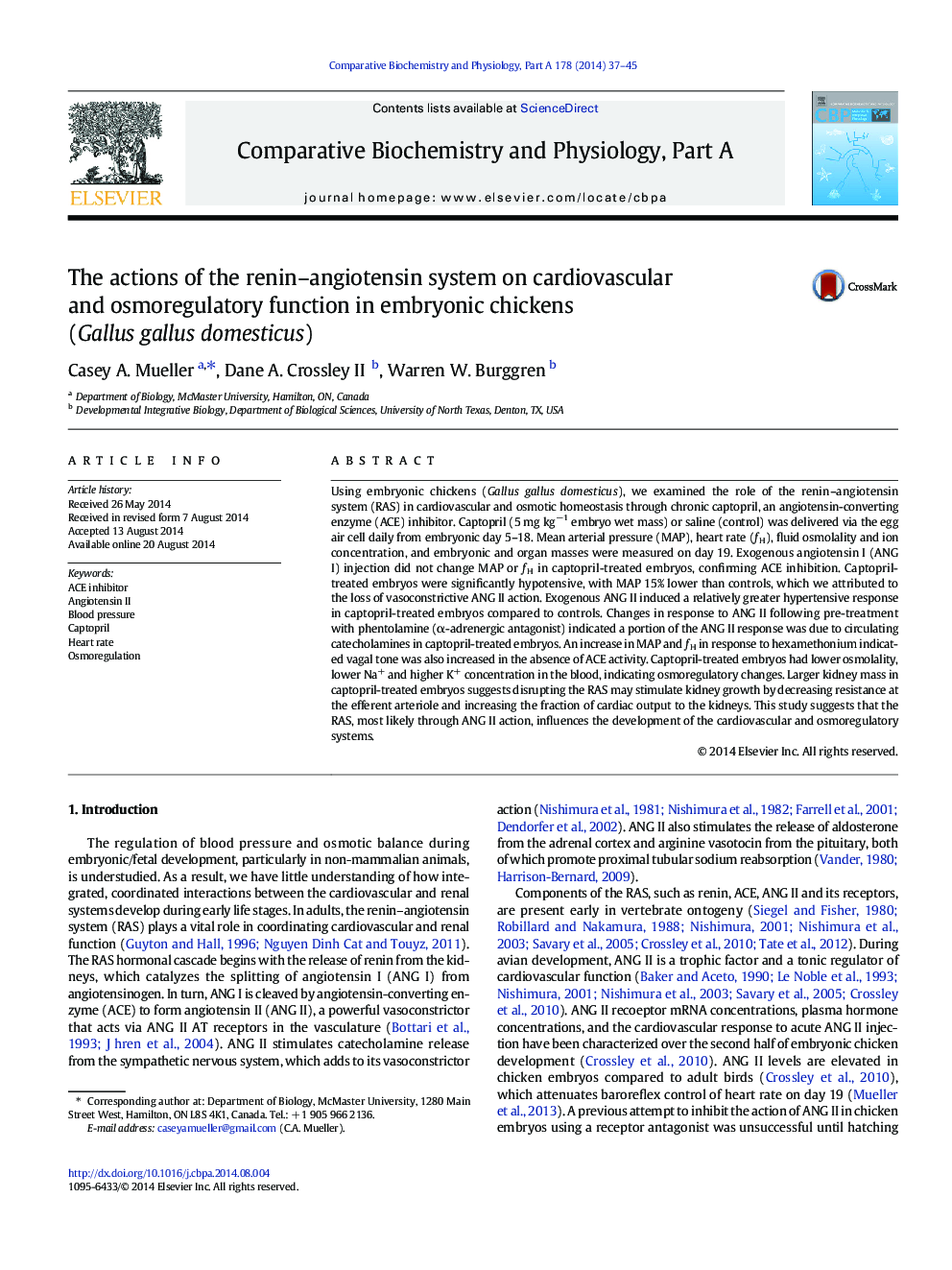| Article ID | Journal | Published Year | Pages | File Type |
|---|---|---|---|---|
| 1972165 | Comparative Biochemistry and Physiology Part A: Molecular & Integrative Physiology | 2014 | 9 Pages |
Using embryonic chickens (Gallus gallus domesticus), we examined the role of the renin–angiotensin system (RAS) in cardiovascular and osmotic homeostasis through chronic captopril, an angiotensin-converting enzyme (ACE) inhibitor. Captopril (5 mg kg−1 embryo wet mass) or saline (control) was delivered via the egg air cell daily from embryonic day 5–18. Mean arterial pressure (MAP), heart rate (ƒH), fluid osmolality and ion concentration, and embryonic and organ masses were measured on day 19. Exogenous angiotensin I (ANG I) injection did not change MAP or ƒH in captopril-treated embryos, confirming ACE inhibition. Captopril-treated embryos were significantly hypotensive, with MAP 15% lower than controls, which we attributed to the loss of vasoconstrictive ANG II action. Exogenous ANG II induced a relatively greater hypertensive response in captopril-treated embryos compared to controls. Changes in response to ANG II following pre-treatment with phentolamine (α-adrenergic antagonist) indicated a portion of the ANG II response was due to circulating catecholamines in captopril-treated embryos. An increase in MAP and ƒH in response to hexamethonium indicated vagal tone was also increased in the absence of ACE activity. Captopril-treated embryos had lower osmolality, lower Na+ and higher K+ concentration in the blood, indicating osmoregulatory changes. Larger kidney mass in captopril-treated embryos suggests disrupting the RAS may stimulate kidney growth by decreasing resistance at the efferent arteriole and increasing the fraction of cardiac output to the kidneys. This study suggests that the RAS, most likely through ANG II action, influences the development of the cardiovascular and osmoregulatory systems.
